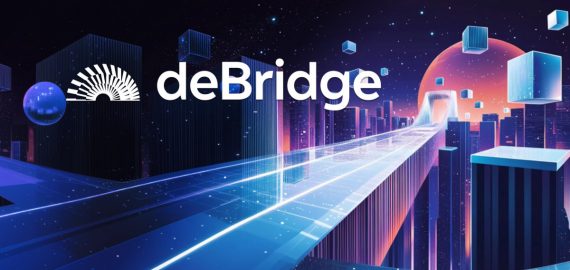Energy Usage Comparison: Proof of Work vs. Proof of Stake Blockchains


In Brief
Exploring the Evolution of Blockchain Consensus: A Comparative Analysis of Proof of Work and Proof of Stake. This article delves into the key differences between Proof of Work (PoW) and Proof of Stake (PoS) consensus algorithms, highlighting their impact on energy consumption, scalability, and environmental sustainability. With a focus on prominent examples like Ethereum’s transition to PoS, we assess the potential of PoS as a greener and more efficient alternative to PoW, offering insights for blockchain enthusiasts and industry stakeholders alike.
Proof of Work vs Proof of Stake, what is the difference?
What is Proof of Work, and why is everyone talking about it while discussing blockchain? Proof of Work is the consensus algorithm most commonly used by popular crypto networks. The PoS (from Proof of Stake, also “staking” is a new method of proving ownership interest that is more sustainable than PoW. In recent years, however, some blockchains have begun attempting to switch between systems – for example, Ethereum, which should help the project’s scalability.

Blockchain is a series of transaction-containing blocks. The genesis block is the first one and is followed by the subsequent one. Since every new element is connected to the ones that came before it, it is improbable that digital currency that has already been spent would be used again.
Miners that choose PoW-based blockchain require powerful hardware to get energy from it as they compete to add new elements to the chain. The “longest chain rule” states that there is no guarantee that the most recent block added will be the final block in the chain. It’s possible for a different miner to add two links in a row more quickly than other miners, making the preceding link invalid. The chain gets longer than the preceding chain in such a situation. Miners have to wait at least six transaction confirmations or six elements to be added for a transaction to become final.
One of the closest alternatives of PoW to the blockchain is the PoS approach, which arranges the links chronologically and gradually without requiring any physical labour or energy-intensive procedures. Furthermore, validators—that is, participant “auditors”—do not compete with one another. Unlike Bitcoin, which takes 10 minutes to generate a single element, PoS generates blocks in about a couple of seconds.
Due to its effects on the environment, PoW ledger energy usage has been a subject of discussion and worry. PoW mining has come under fire because of its energy-intensive nature, which has raised concerns about its carbon footprint and role in climate change. According to some estimations, the yearly energy consumption of Bitcoin on its own is on par with that of small nations.
PoW uses competition among miners to solve challenging mathematical problems in order to verify transactions and add new elements to the network. Significant amounts of energy and processing power are needed for this procedure. Miners employ specialized gear such as GPUs (Graphics Processing Units) or ASICs (Application-Specific Integrated Circuits) to effectively do these calculations. PoW has a significant energy usage. For instance, the Bitcoin network, which uses proof-of-work, takes a lot of power. Concerns regarding the environmental effect of PoW-based ledgers have arisen due to the increasing energy usage of these systems as mining becomes more complex and requires more processing power.
How does Proof of Stake work?
At the same time, In Proof of Stake a validator’s probability of being chosen to produce a new block increases with the amount of digital currencies they own. PoS uses a lot less energy because it doesn’t require the same number of processing power as PoW. Validators just need to keep their investment in the coin and remain connected to the network. For instance, with its Ethereum 2.0 update, the most extensive decentralized network – Ethereum, is switching from PoW to PoS. Part of the motivation for this shift is to lessen Ethereum’s energy usage and environmental effects.
While considering Proof of Stake versus Proof of Work “derby”, there is no competition in providing a new block based on power usage in PoS networks. However, PoS miners still have ongoing expenses related to providing Internet connectivity and computer maintenance.
PoS blockchain reduces network operating expenses since it uses a lot less energy. However, due to the substantially increased throughput of transactions and the fact that network management still receives rewards despite decreased transaction costs, pool operators and validators can still profit. In terms of stability and sustainability, there are currently no alternatives to PoS.In general, Metaverse Post thinks that PoS is showing promise as a substitute for PoW, even if both have benefits and drawbacks, particularly for blockchain initiatives looking to lower their energy and carbon impact.
Disclaimer
In line with the Trust Project guidelines, please note that the information provided on this page is not intended to be and should not be interpreted as legal, tax, investment, financial, or any other form of advice. It is important to only invest what you can afford to lose and to seek independent financial advice if you have any doubts. For further information, we suggest referring to the terms and conditions as well as the help and support pages provided by the issuer or advertiser. MetaversePost is committed to accurate, unbiased reporting, but market conditions are subject to change without notice.
About The Author
Victoria is a writer on a variety of technology topics including Web3.0, AI and cryptocurrencies. Her extensive experience allows her to write insightful articles for the wider audience.
More articles

Victoria is a writer on a variety of technology topics including Web3.0, AI and cryptocurrencies. Her extensive experience allows her to write insightful articles for the wider audience.

















































